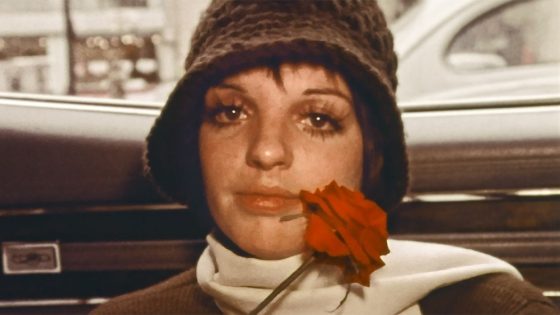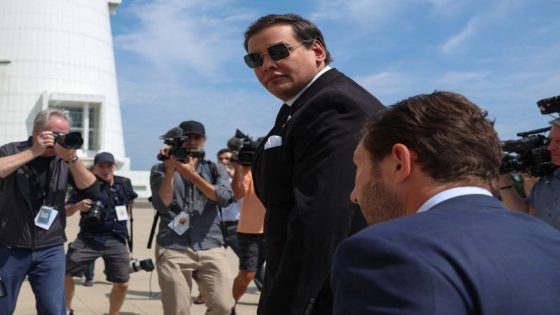On November 16, 1964, when she was 18, Liza Minnelli stepped onto the stage of the London Palladium to join in a concert given by her mother, Judy Garland — the first time the two of them appeared onstage together. Liza, the year before, had done an Off Broadway musical, but this performance was her entrée into the world spotlight. A famous album was made of the event (“Judy Garland: Live! at the London Palladium”), and Garland was nothing if not magnanimous in providing the platform to launch Liza’s career.
Yet in “Liza: A Truly Terrific Absolutely True Story,” Bruce David Klein’s scintillating documentary portrait of Minnelli, we see black-and-white clips from the Palladium concert, and one aspect of it is startling. Liza, young as she was, already performs with a pizzazz worthy of her mother. But even as the event was presented as a passing-of-the-torch-song celebration, Garland keeps tapping Liza’s bulky microphone from the bottom so that it practically hits Liza in the face. The ostensible reason for this is that Liza wasn’t holding the mic close enough (which doesn’t at all appear to be true).
According to the singer-pianist/cabaret star Michael Feinstein, a close friend of Liza’s who is interviewed throughout the documentary (he serves as the film’s captivating psychological narrator-bard), the real reason Judy Garland kept practically knocking her daughter in the face is that she was suddenly quite jealous of her. But why would she feel that way if it was Judy herself who asked Liza to perform? One can only surmise that the invitation had a stage-mother aspect — that Judy viewed the teenage Liza as an extension of herself, and didn’t want her to get too far beyond herself. You can imagine how this might have messed with Liza’s head.
And yet…it didn’t. Not really. Going into a documentary about Liza Minnelli, your cliché image of Liza may be that she was troubled, damaged, a chip off the old high-strung, self-traumatizing block. Liza ultimately battled addiction (and, of course, had to do it in the glare of the media), and there was much public attention paid to the devastation she suffered as a result of her three miscarriages. Beyond that, her whole nervously tingling star persona, onstage and in movies like “Cabaret” and “New York, New York,” was a striking descendent of her mother’s — the emotion pouring out through her fingertips, the soar of her voice, but also the tremulous quality that came off as vulnerability thirsting for strength. Even as you were in the grip of Liza’s electricity, you almost couldn’t help but see it as an echo of everything about Judy Garland that had made her a transcendent talent and, at the same time, a figure of the most neurotic flamboyance.
But one of the revelations of “Liza: A Truly Terrific Absolutely True Story” is that even as Liza has had a life of upheaval, and her share of burdens (constantly getting asked about her mother being one of the main ones), she has also led a life of extraordinary joy. At 77, with an I’m-still-here candor, she is interviewed throughout the film, and she’s here to testify that she was not Judy Garland The Junior Wreck Edition.
Her mother, of course, was more than a great singer. Garland was one of the key artists of the 20th century, because she created a visionary arena of vocal performance: the over-the-top cascade, suffused with feeling, a form she fashioned into an Olympian expression of feminine consciousness. Garland had many inheritors, but the most important were the original two: Barbra Streisand and Liza Minnelli. They were the ones who took the Garland magic and pollinated the world with it. Garland, who destroyed herself with drugs (at one point she tried to kill herself by slashing her own throat with a broken bottle), was the victim of too many things to count. She died on June 22, 1969, and “Liza” openly makes the point that as tragic as her death was, it cleared the way for her daughter to be her own woman.
Liza was so close to her mother that when Judy died, Liza cried for eight straight days. Kay Thompson, the American author, singer, and vocal coach who became the first of Liza’s powerful mentors, says in the film that Liza would not have become the star she was had Garland lived. And that’s not just because she had to get out from under her mother’s thumb. On her own, Liza had the space to invent who she would be. She started as an eager and slightly klunky dancer, appearing on variety shows (it’s jarring to see her with conventional long hair, as if she were Marlo Thomas), but as the film captures, she took on a series of friends who shaped her identity as a performer.
From Charles Aznavour, the French Frank Sinatra, she learned to project a song into three dimensions of personal storytelling. From Bob Fosse, who directed her brilliantly in “Cabaret,” she learned a kind of movement that was so suffused with bravado it became, in her (jazz) hands, a divinely decadent version of faith. At every moment, her Sally Bowles could not have been more alive. (Liza devised her own eye make-up for the film, and the giant lashes became her signature: She was staring out at the world as if she wanted to eat it whole.) The lyricist Fred Ebb, who became Minnelli’s closest friend, created with his composing partner John Kander an emotional canvas for Liza’s charisma as surely as Josef von Sternberg did for Marlene Dietrich. And the fashion designer Halston gave her a look — the sequins, a postmodern billowy flapper glamour — that made her unique on the world stage. Her face became as iconic as Audrey Hepburn’s: those popping eyes, the grin of sheer bliss. “Don’t go around with people you don’t like,” Kay Thompson told her, and Liza followed that rule. She loved men, and the film suggests — without going too deeply into the details — that she was unapologetically promiscuous.
The movie also shows you, quite captivatingly, how Liza’s original mentor wasn’t her mother but her father, the great director Vincent Minnelli. As a young girl, she would hang out on his sets, and she absorbed much about him — his willingness to be ruthless for the sake of art, and his gay sensibility, which was echoed in the baseline ease of her alliance with so many gay creators.
“Liza” doesn’t try to be the definitive chronicle of Liza Minnelli’s showbiz career. It lingers over her epochal 1972 TV special “Liza with a Z,” as well as the way that she stepped in (unbilled) to save the original Broadway production of “Chicago” when Gwen Verdon wasn’t able to perform. But her film career is given oddly short shrift. No mention is made of “The Sterile Cuckoo” (1969), in which she all but invented the manic pixie dream girl, or of her fine screwball performance in “Arthur” (1981). But maybe that’s because “Liza” is so devoted, and with good reason, to finding the essence of Liza Minnelli in her relationship to live audiences. We see her drink in their energy like air, then give it back to them as a heavenly glow.
Source Agencies



